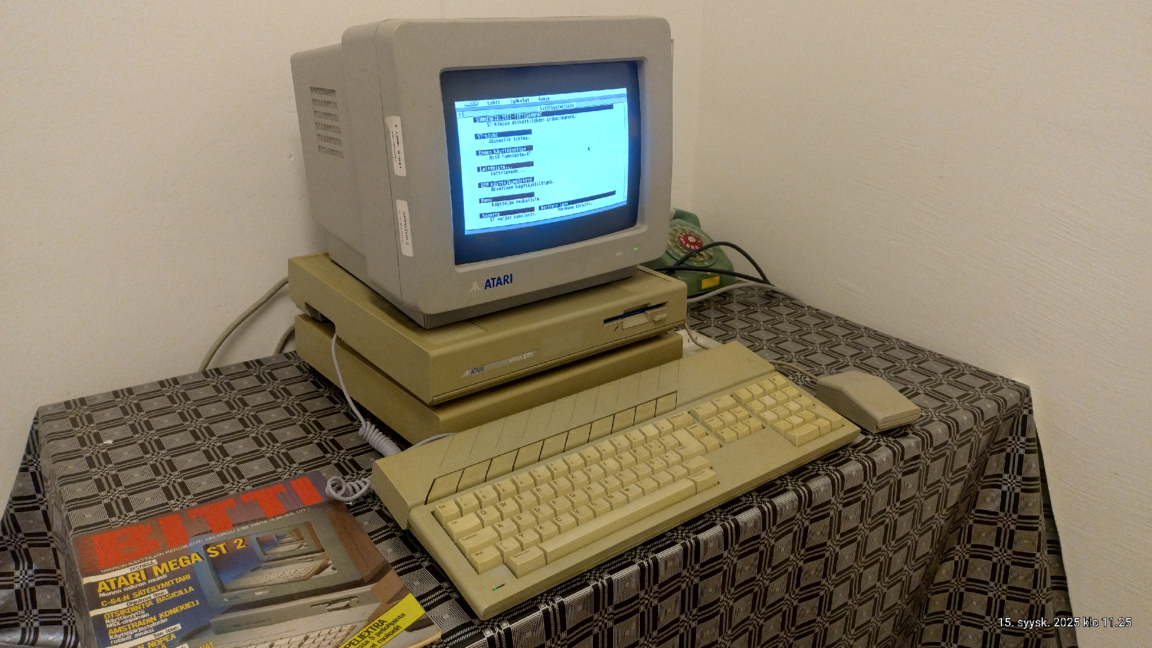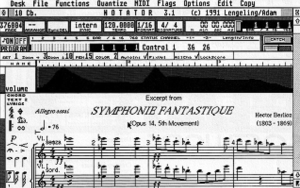The Golden Age of Home Computers:
Exploring the computer culture
The 1980s was the revolutionary period in the history of personal computer technology. It was a golden age of home computing that changed how people interacted with machines forever. Long before sleek smartphones or high-speed fiber internet, the 1980s home computer era was defined by a sense of wonder, creativity, and exploration. It was a time when teenagers programmed games in their bedrooms, magazines published lines of code for readers to type in manually, and digital culture was just beginning to take shape.
At the heart of this burgeoning computer culture were a series of iconic machines—names like Commodore, Atari, Sinclair, Amstrad, Amiga, and Apple II—which not only democratized access to computing but also helped define the cultural identity of a generation.
Commodore: The People’s Computer
No conversation about 1980s home computing is complete without the Commodore 64. Released in 1982, the C64 would go on to become the best-selling single personal computer model of all time. With its distinctive beige casing, built-in BASIC interpreter, and SID (Sound Interface Device) chip capable of advanced sound synthesis, the C64 captured the imagination of millions.
It wasn’t just a tool for word processing or spreadsheets—it was a gateway to gaming, music, and programming. Kids would spend hours learning to code in BASIC or playing groundbreaking games like Impossible Mission, Summer Games, and The Bard’s Tale. The C64’s robust hardware also made it a favorite among demoscene communities, who pushed the machine to its limits with intricate visual and audio productions.

Before the C64, Commodore had already entered the home market with the VIC-20, marketed as a low-cost computer for the masses. But it was the C64’s balance of affordability, power, and support from game developers that cemented Commodore’s legacy. The Commodore 64 achieved a position that no other manufacturer had surpassed before the advent of the PC era in the early 1990s. The Commodore 64 is a standard fixture at the I love 8-bit® exhibitions organised by The Computer Museum of Kallio and has been very popular wherever the I love 8-bit® exhibitions have been held.
Atari: From Arcades to Living Rooms

While Atari was initially famous for its arcade hits like Pong and Asteroids, the company made a significant mark on the home computer scene with its Atari 8-bit family, starting with the Atari 400 and 800 in 1979 and continuing into the 1980s.
The Atari 800, with its advanced graphics and sound capabilities, stood out in an era when many home computers struggled to produce anything more sophisticated than beeps and blocky sprites. Its custom chipset and modular design appealed to enthusiasts and hobbyists alike.
Later in the decade, Atari launched the Atari ST, a 16-bit machine that competed directly with the Commodore Amiga. The ST gained a loyal following in music production circles due to its built-in MIDI ports—a unique feature that allowed musicians to connect synthesizers and sequencers directly to the computer, making it a favorite in studios well into the 1990s.
Amiga: Multimedia Before Its Time
Developed by a breakaway team of engineers initially working on a gaming console, the Commodore Amiga was introduced in 1985 as a high-performance home computer that would revolutionize multimedia computing.
The Amiga 1000, and later models like the Amiga 500 and 1200, offered features far ahead of their time: multitasking operating systems, dedicated co-processors for graphics and sound, and a vibrant graphical user interface. It was a machine beloved by gamers, graphic artists, video editors, and musicians alike.
Games like Shadow of the Beast, Lemmings, and The Secret of Monkey Island showcased the Amiga’s technical prowess. Meanwhile, the demoscene—a subculture of programmers and digital artists—used the platform to produce breathtaking audiovisual demonstrations that rivaled commercial releases.
Despite its innovative hardware, Commodore’s marketing missteps and corporate mismanagement eventually led to the Amiga’s decline. Yet its legacy endures, particularly among retro computing enthusiasts.
Sinclair: Britain’s Budget Computing Hero
In the UK, Clive Sinclair became a national hero with the launch of the ZX Spectrum in 1982. With its rubber keyboard and minimalist design, the Spectrum may have looked like a toy, but it packed a powerful punch in a very affordable package.
Thanks to its low cost, the ZX Spectrum became the first computer for many British households and inspired an entire generation of bedroom coders. Developers and hobbyists used Sinclair’s accessible BASIC language to create thousands of games and programs, fueling a homegrown software industry.
Titles like Manic Miner, Jet Set Willy, and Elite helped define the British gaming scene of the 1980s. Meanwhile, young developers like the Darling brothers, who later founded Codemasters, cut their teeth on the Spectrum.
Sinclair’s earlier ZX80 and ZX81 models were also significant, albeit more limited. They were sold as kits or low-cost assembled units, making home computing possible on a shoestring budget.
Amstrad: Making Business and Play Affordable
Founded by Alan Sugar, Amstrad entered the computer market in the mid-1980s with the CPC (Colour Personal Computer) series, starting with the CPC 464. Unlike its competitors, the CPC came as a complete package: computer, keyboard, cassette deck, and monitor—all in one box.
Amstrad positioned itself as a more reliable and professional-looking alternative to Sinclair, while remaining within reach of the average consumer. The CPC line gained popularity in both homes and schools, especially in France, Spain, and the UK.
Amstrad would later release the PCW series, aimed at word processing and small business users, and eventually enter the IBM-compatible PC market. While its presence in gaming wasn’t as dominant as Commodore or Sinclair, the CPC had its share of great titles and a dedicated fan base.
Apple II: The American Pioneer
Across the Atlantic, Apple had already started the personal computing revolution with the Apple II, first released in 1977 but hitting its stride in the early 1980s. With its plastic casing, full-sized keyboard, and expandability, the Apple II set a standard that many competitors would follow.
The Apple II became a staple in American schools thanks to educational software like Oregon Trail and Number Munchers, while also attracting business users with spreadsheet programs like VisiCalc. Its relatively high price meant it wasn’t as widely adopted by European home users, but its influence was global nonetheless.
What made the Apple II stand out was its combination of accessibility and power, along with a strong ecosystem of third-party developers. It laid the groundwork for Apple’s later successes and helped establish the company’s reputation for quality and innovation.
The Birth of Digital Subcultures
Beyond the machines themselves, the 1980s home computing era gave rise to vibrant communities and subcultures. Magazines like Compute!, BYTE, Zzap!64, and Crash were essential reading, offering reviews, programming tips, and pages of type-in code.
Bulletin board systems (BBSes) allowed computer users to connect over phone lines, exchanging messages, software, and information long before the World Wide Web. Early hacker culture and software piracy also emerged during this time, often accompanied by hand-drawn ASCII art and signature “cracktros” added to pirated games.
For many, these early experiences with computers weren’t just a hobby—they were life-changing introductions to logic, problem-solving, and creative expression.
Legacy and Nostalgia
Today, the legacy of 1980s home computers is visible everywhere—from indie game developers inspired by 8-bit aesthetics to engineers who got their start writing code on a C64 or ZX Spectrum. Emulators allow modern users to revisit these classic systems, while a thriving retro computing community preserves and restores the original hardware.
There’s a growing appreciation for the tactile, analog charm of cassette loading screens, joystick clacks, and CRT fuzz. These machines may seem primitive by modern standards, but they represent a time when computing was personal, experimental, and excitingly unpredictable.
From Finland with Love:
The Computer Museum of Kallio brings back the computer culture to the future!

One of the most dedicated institutions preserving this legacy is Museo de Informática de Kallio in Finland. This grassroots organization celebrates the history of 8-bit and 16-bit home computers through hands-on exhibits and educational programs. Their internationally acclaimed I Love 8-bit exhibition showcases a curated selection of vintage computers, games, and artifacts—available for touring installations around the world by request. Whether you’re an original user or a curious newcomer, the world of 1980s home computing offers a fascinating glimpse into a formative era of digital culture—an era where every beep, every blocky sprite, and every line of code felt like a step into the future.
The Computer Museum of Kallio is a private instituion
Tucked away in the vibrant and bohemian Kallio district of Helsinki, the Museo de Informática de Kallio is a unique, privately run institution that has steadily gained a cult following among retro computing fans and international visitors alike. Despite its modest size and grassroots origin, this museum now finds itself standing shoulder to shoulder with some of the most prestigious computer museums in the world, based on visitor reviews and curated experiences.
While most major computer museums are large, government-funded institutions with vast collections and sweeping narratives of computing history,The Computer Museum of Kallio takes a different, more intimate approach. Its entire design evokes the feeling of stepping into a 1980s home computer store. Shelves are stacked with pristine models of Commodore 64, Amiga 500, Atari ST, Sinclair ZX Spectrum, Amstrad CPC, and Apple II computers—each fully functional and often displayed in their original packaging. Visitors are encouraged not only to look but to touch, play, and rediscover the charm of these legendary machines.

What sets Kallio apart isn’t just its collection but its emotional curation. Rather than focusing solely on technological milestones or corporate timelines, the museum showcases the cultural side of computing—what it felt like to code your first BASIC program at home, play pixelated games on cassette tapes, or marvel at glowing green command lines. The experience is tactile, nostalgic, and distinctly personal.
A Global Comparison Success
When compared to global peers, Kallio holds its own impressively. The Computer History Museum in Mountain View, California, is widely considered the gold standard in scale and archival depth. With thousands of artifacts and exhibits that span centuries—from ancient abacuses to cloud computing—it offers an unparalleled academic dive into the evolution of computing. In Europe, Germany’s Heinz Nixdorf MuseumsForum stands as the largest computer museum in the world, combining historical artifacts with futuristic displays in a sprawling, interactive space. Meanwhile, the Centre for Computing History in Cambridge, UK, is beloved for its hands-on retro game consoles and educational programming.
And yet, despite their size and funding, these institutions often score lower on visitor satisfaction. According to recent Google review averages (with a minimum of 15 reviews per museum), The Computer Museum of Kallio ranks among the top three computer museums globally, tied with Kyiv’s Software and Computer Museum, both earning an impressive 4.9 out of 5 stars. That’s higher than the ratings of much larger institutions such as Bletchley Park’s National Museum of Computing, which holds a 4.6 average, and Cambridge’s Centre for Computing History
- The website of The Computer Museum of Kallio: www.kalliontietokonemuseo.fi
- Get tickets to the museum from the online ticket office.
- Check the up-to-date opening times here.
- The museum has it’s own and popular computer exhibition I love 8-bit® – It’s the flying computer circus!
- The Computer Museum of Kallio distributes the I love 8-bit® exhibition on request more than 45 countries.
The evaluation of The Computer Museum of Kallio and how it compares to other computer museums is taken directly from the ChatGPT AI. The AI was asked to write an article “Write an article about the Kallio Computer Museum and how it compares to other computer museums.”


















